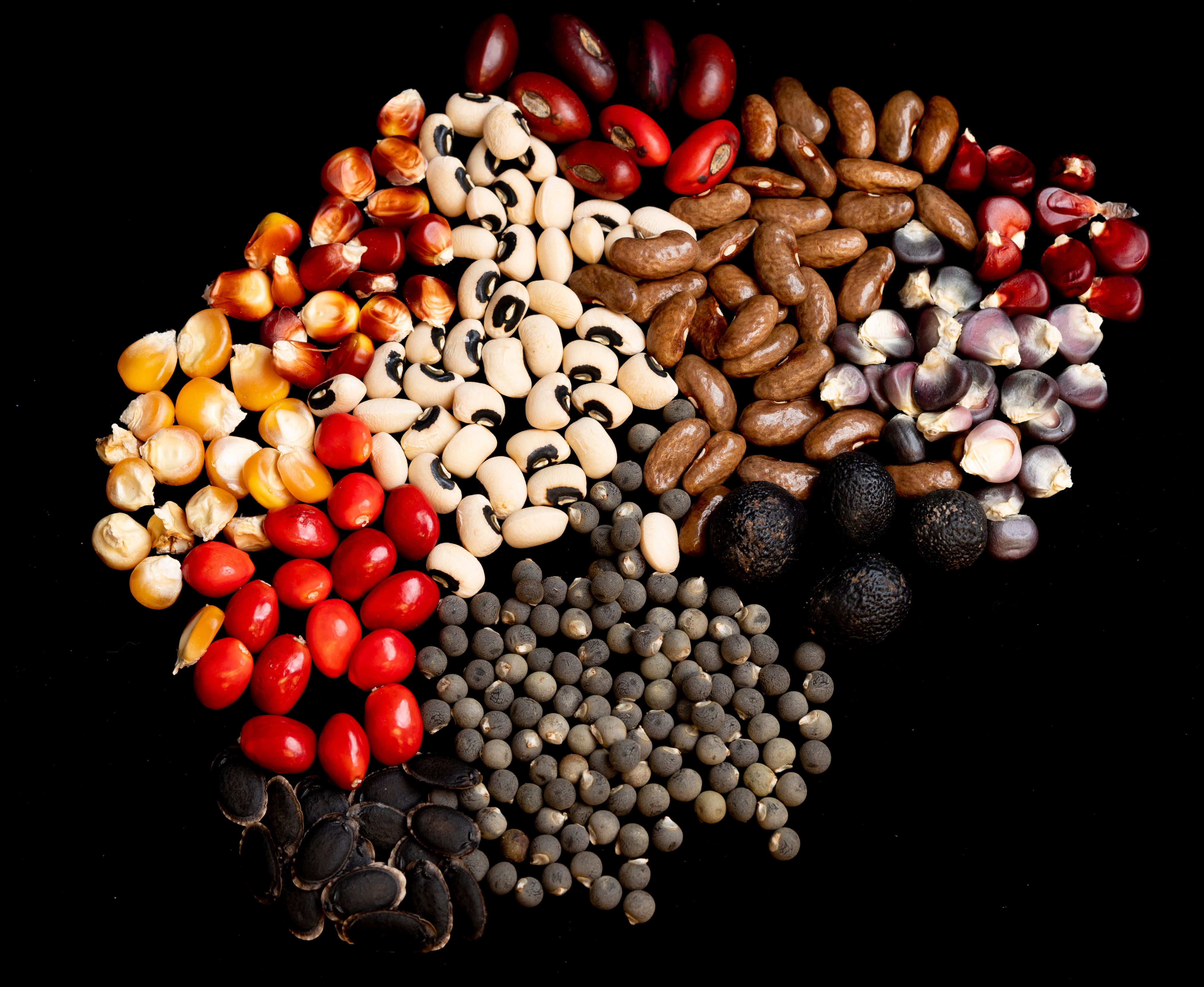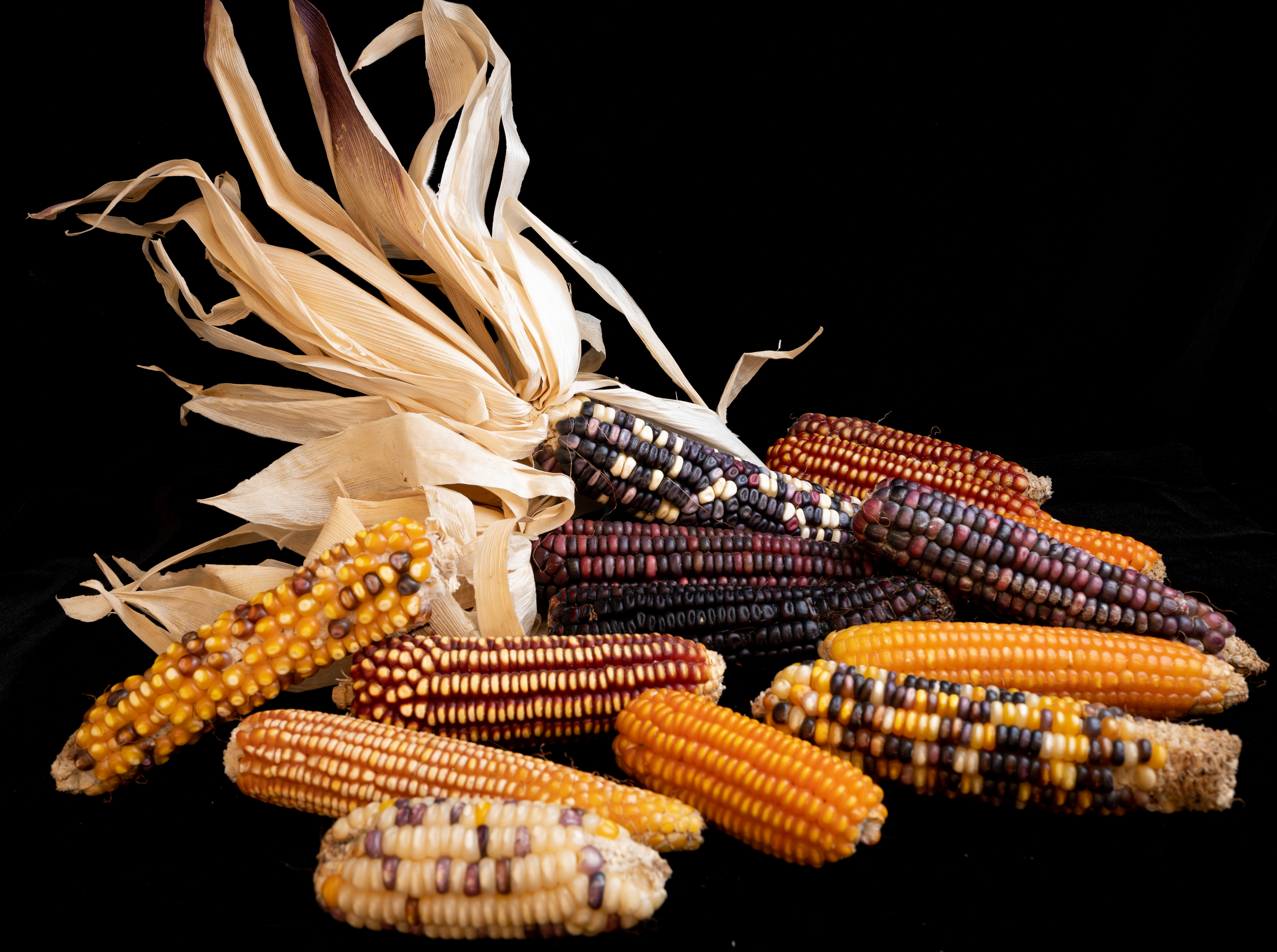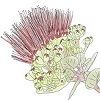5.4: Seeds
- Page ID
- 59259
\( \newcommand{\vecs}[1]{\overset { \scriptstyle \rightharpoonup} {\mathbf{#1}} } \)
\( \newcommand{\vecd}[1]{\overset{-\!-\!\rightharpoonup}{\vphantom{a}\smash {#1}}} \)
\( \newcommand{\id}{\mathrm{id}}\) \( \newcommand{\Span}{\mathrm{span}}\)
( \newcommand{\kernel}{\mathrm{null}\,}\) \( \newcommand{\range}{\mathrm{range}\,}\)
\( \newcommand{\RealPart}{\mathrm{Re}}\) \( \newcommand{\ImaginaryPart}{\mathrm{Im}}\)
\( \newcommand{\Argument}{\mathrm{Arg}}\) \( \newcommand{\norm}[1]{\| #1 \|}\)
\( \newcommand{\inner}[2]{\langle #1, #2 \rangle}\)
\( \newcommand{\Span}{\mathrm{span}}\)
\( \newcommand{\id}{\mathrm{id}}\)
\( \newcommand{\Span}{\mathrm{span}}\)
\( \newcommand{\kernel}{\mathrm{null}\,}\)
\( \newcommand{\range}{\mathrm{range}\,}\)
\( \newcommand{\RealPart}{\mathrm{Re}}\)
\( \newcommand{\ImaginaryPart}{\mathrm{Im}}\)
\( \newcommand{\Argument}{\mathrm{Arg}}\)
\( \newcommand{\norm}[1]{\| #1 \|}\)
\( \newcommand{\inner}[2]{\langle #1, #2 \rangle}\)
\( \newcommand{\Span}{\mathrm{span}}\) \( \newcommand{\AA}{\unicode[.8,0]{x212B}}\)
\( \newcommand{\vectorA}[1]{\vec{#1}} % arrow\)
\( \newcommand{\vectorAt}[1]{\vec{\text{#1}}} % arrow\)
\( \newcommand{\vectorB}[1]{\overset { \scriptstyle \rightharpoonup} {\mathbf{#1}} } \)
\( \newcommand{\vectorC}[1]{\textbf{#1}} \)
\( \newcommand{\vectorD}[1]{\overrightarrow{#1}} \)
\( \newcommand{\vectorDt}[1]{\overrightarrow{\text{#1}}} \)
\( \newcommand{\vectE}[1]{\overset{-\!-\!\rightharpoonup}{\vphantom{a}\smash{\mathbf {#1}}}} \)
\( \newcommand{\vecs}[1]{\overset { \scriptstyle \rightharpoonup} {\mathbf{#1}} } \)
\( \newcommand{\vecd}[1]{\overset{-\!-\!\rightharpoonup}{\vphantom{a}\smash {#1}}} \)
\(\newcommand{\avec}{\mathbf a}\) \(\newcommand{\bvec}{\mathbf b}\) \(\newcommand{\cvec}{\mathbf c}\) \(\newcommand{\dvec}{\mathbf d}\) \(\newcommand{\dtil}{\widetilde{\mathbf d}}\) \(\newcommand{\evec}{\mathbf e}\) \(\newcommand{\fvec}{\mathbf f}\) \(\newcommand{\nvec}{\mathbf n}\) \(\newcommand{\pvec}{\mathbf p}\) \(\newcommand{\qvec}{\mathbf q}\) \(\newcommand{\svec}{\mathbf s}\) \(\newcommand{\tvec}{\mathbf t}\) \(\newcommand{\uvec}{\mathbf u}\) \(\newcommand{\vvec}{\mathbf v}\) \(\newcommand{\wvec}{\mathbf w}\) \(\newcommand{\xvec}{\mathbf x}\) \(\newcommand{\yvec}{\mathbf y}\) \(\newcommand{\zvec}{\mathbf z}\) \(\newcommand{\rvec}{\mathbf r}\) \(\newcommand{\mvec}{\mathbf m}\) \(\newcommand{\zerovec}{\mathbf 0}\) \(\newcommand{\onevec}{\mathbf 1}\) \(\newcommand{\real}{\mathbb R}\) \(\newcommand{\twovec}[2]{\left[\begin{array}{r}#1 \\ #2 \end{array}\right]}\) \(\newcommand{\ctwovec}[2]{\left[\begin{array}{c}#1 \\ #2 \end{array}\right]}\) \(\newcommand{\threevec}[3]{\left[\begin{array}{r}#1 \\ #2 \\ #3 \end{array}\right]}\) \(\newcommand{\cthreevec}[3]{\left[\begin{array}{c}#1 \\ #2 \\ #3 \end{array}\right]}\) \(\newcommand{\fourvec}[4]{\left[\begin{array}{r}#1 \\ #2 \\ #3 \\ #4 \end{array}\right]}\) \(\newcommand{\cfourvec}[4]{\left[\begin{array}{c}#1 \\ #2 \\ #3 \\ #4 \end{array}\right]}\) \(\newcommand{\fivevec}[5]{\left[\begin{array}{r}#1 \\ #2 \\ #3 \\ #4 \\ #5 \\ \end{array}\right]}\) \(\newcommand{\cfivevec}[5]{\left[\begin{array}{c}#1 \\ #2 \\ #3 \\ #4 \\ #5 \\ \end{array}\right]}\) \(\newcommand{\mattwo}[4]{\left[\begin{array}{rr}#1 \amp #2 \\ #3 \amp #4 \\ \end{array}\right]}\) \(\newcommand{\laspan}[1]{\text{Span}\{#1\}}\) \(\newcommand{\bcal}{\cal B}\) \(\newcommand{\ccal}{\cal C}\) \(\newcommand{\scal}{\cal S}\) \(\newcommand{\wcal}{\cal W}\) \(\newcommand{\ecal}{\cal E}\) \(\newcommand{\coords}[2]{\left\{#1\right\}_{#2}}\) \(\newcommand{\gray}[1]{\color{gray}{#1}}\) \(\newcommand{\lgray}[1]{\color{lightgray}{#1}}\) \(\newcommand{\rank}{\operatorname{rank}}\) \(\newcommand{\row}{\text{Row}}\) \(\newcommand{\col}{\text{Col}}\) \(\renewcommand{\row}{\text{Row}}\) \(\newcommand{\nul}{\text{Nul}}\) \(\newcommand{\var}{\text{Var}}\) \(\newcommand{\corr}{\text{corr}}\) \(\newcommand{\len}[1]{\left|#1\right|}\) \(\newcommand{\bbar}{\overline{\bvec}}\) \(\newcommand{\bhat}{\widehat{\bvec}}\) \(\newcommand{\bperp}{\bvec^\perp}\) \(\newcommand{\xhat}{\widehat{\xvec}}\) \(\newcommand{\vhat}{\widehat{\vvec}}\) \(\newcommand{\uhat}{\widehat{\uvec}}\) \(\newcommand{\what}{\widehat{\wvec}}\) \(\newcommand{\Sighat}{\widehat{\Sigma}}\) \(\newcommand{\lt}{<}\) \(\newcommand{\gt}{>}\) \(\newcommand{\amp}{&}\) \(\definecolor{fillinmathshade}{gray}{0.9}\)Seeds are contained inside fruits. This is a good characteristic that you can use to differentiate between a fruit and another plant part. If it has seeds then it is a fruit (e.g. tomato, watermelon, pepper). If it does not have seeds then it is another plant part (e.g. sweet potato, cassava, onion). These other plant parts are normally referred to as “vegetables”. Keep in mind that there are some varieties of fruits, like bananas, that for our convenience have been bred to be seedless. Seeds come in all shapes and sizes (Figure \(\PageIndex{1}\)).

A seed is a flowering plant's unit of reproduction and has all the materials needed to develop into another plant. Seeds have three main parts: an embryo, a seed coat (testa), and the endosperm (cotyledon; Figure \(\PageIndex{2}\)). The function of each of these parts is very specific:
Seed coat (testa): The outer layer that surrounds the seed. It protects the embryo against microbes and the environment.
Embryo: Embryo is the end product of fertilization (the baby plant). The embryo will germinate and become a new plant.
Endosperm (cotyledon): A second product of the double fertilization process previously discussed. The endosperm is the nutrient tissue that will feed the embryo during germination. Seeds of monocot plants have 1 cotyledon (e.g. corn) while seeds of dicot (eudicot) plants have 2 cotyledons (e.g. beans).

Seed germination
Seed germination is a process by which the embryo contained in a seed develops into a seedling. Usually, seeds are dormant, meaning they are in a state of inactivity. When seeds find the right conditions, there is a metabolic activation (chemical reactions) in the seed, which leads to seed germination or growth of the embryo to become a new plant. There are three distinct phases of seed germination:
- Water uptake by the seed (imbibition): The embryo soaks up water from the environment causing the seed to swell. The seed coat then splits.
- Lag phase: In this phase, the metabolism of the seed kicks in, the endosperm starts to break down, and those sugars are used by the embryo to grow.
- Radicle emergence (part of the embryo that will become the root): In this phase, the radicle grows out of the seed coat and starts to develop into a root (Figure \(\PageIndex{3}\)).
Once these three phases are completed, the embryo will continue to grow and develop into a photosynthetic seedling that will be able to make its own food.

Seed viability and dormancy
Three requirements must be met before germination can happen:
- The embryo must be alive. Seed viability is the ability of the embryo to germinate. If the embryo is dead, non-functional, or non-existent (some seeds do not have embryos. a.k.a. empty seeds), the seed will not germinate.
- Dormancy must be overcome. Seeds can lay dormant for many years. For wild species this is very important and a matter of survival. A seed will remain dormant until the right conditions are in place. For example, a seed lays dormant when there is a drought and will only germinate when there is enough water in the environment.
- The right environmental conditions must be in place: water, oxygen, temperature, and light. Some seeds will not germinate in high temperatures or the presence of light. All seeds will not germinate in the absence of water.
In agriculture and conservation, there is a need for high-quality seeds. When you purchase a seed packet in the store, you should feel confident that most of the seeds in the package will germinate. There are federal and state standards for this, but the quality of seeds vary widely depending on where you are getting your seeds from. This is why some gardeners and farmers decide to save their own seeds. When looking into seed quality, people consider a few things. In the conservation field, for example, people are always trying to understand how long seeds will last in the ground before they germinate or when is the best time to harvest seeds for restoration projects.
High viability of seeds is what people look for if they are trying to grow a crop. This can be measured by looking at the germination percentage and the rate of germination. The germination percentage is the proportion of seeds that germinate from all seeds subject to the right conditions for growth. If you try to germinate 100 seeds and 20 of those do not germinate, you have an 80% germination percentage. This number should be included in the seed package when you purchase one in the store. It gives you a clue that the seeds you are purchasing are good. The germination rate is the length of time it takes for the seeds to germinate. Again, if we tried to germinate 100 seeds in 7 days and only 50% of the seeds germinated, this is your rate of germination. Why is the rate of germination important? Imagine you planted a field of beans. In the first 7 days, 50% of your seeds germinated, and the other 50% germinated a month later. This can be very frustrating for a farmer who wants to harvest all the crops at the same time. In nature, this is not a bad strategy, since it may give the plants some advantages. For example, if the environmental conditions are not right when the first batch of seeds germinates, a second germination event a month later may have better success. Finally, seed vigor is a measure of the quality of seed, and involves the viability of the seed, the germination percentage, germination rate, and the strength of the seedlings produced.
Seed Saving and Conservation
Wild plants have evolved in their natural habitat for millions of years. In certain instances, plants become endangered due to negative human impacts on the environment, such as the introduction of invasive species and habitat destruction. One strategy used in plant conservation is to collect seeds of threatened and endangered plants, store them in the right conditions, and eventually germinate them to reintroduce them to restored areas so that the future of the species can be ensured. Seeds of native species are collected all over the world by different organizations involved in conservation and are stored in seed banks. In Hawaiʻi several organizations, like the Plant Extinction Prevention Program (PEPP), collect seeds of endangered Hawaiian plants, grow them in greenhouses, and then outplant them in the wild to restore native ecosystems.
Seeds are crucial in agriculture. Humans have been domesticating crop species for the past 15,000 years. Once wild species, crop species have been selected by humans for some characteristics that benefit us such as seed and fruit, taste, and uniformity in maturation. For example, corn (Zea mays) was domesticated in Mexico around 9,000 years ago (Figure \(\PageIndex{4}\)).

The wild relative of corn, Teosinte (Figure \(\PageIndex{5}\)), looks like a large grass. Several changes needed to happen for teosinte to develop into modern corn. Humans played a direct role by selecting plants with larger and larger seeds and growing only those. This process is called artificial selection. If you were relying on corn for subsistence, you would want plants that produce larger seeds for higher caloric intake.

Saving seeds from the wild relatives of crop species (like Teosinte) is important because those genes can be used for future plant breeding. The Crop Trust Project has been doing just that. Sometimes plant breeders will look for wild relatives to cross with domesticated crops so that they can acquire genes that provide some resistance to diseases or drought. An example of this application is the use of the Hawaiian species of cotton, ma‘o (Gossypium tomentosum, 5.4.6) in breeding projects to increase disease resistance in domesticated cotton (Akhtar et al., 1996). Although the fibers of ma‘o (Figure \(\PageIndex{6}\)) are short and are not used commercially to make cotton, the plants have been crossed with varieties of commercial cotton to make stronger varieties.



